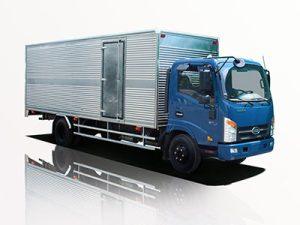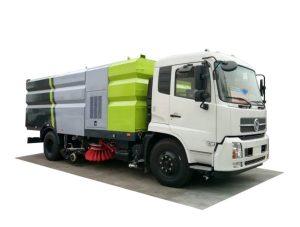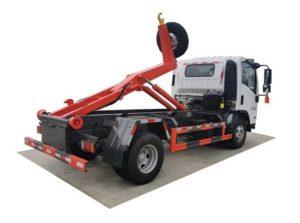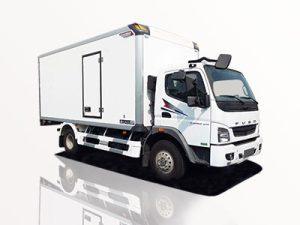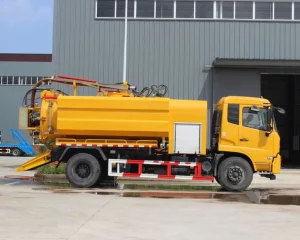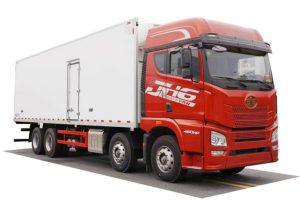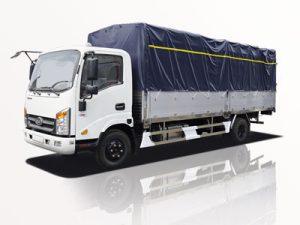Monday to Saturday - 8:00 -17:30
Understanding the Different Kinds of Fire Trucks: A Comprehensive Guide
Fire trucks play a vital role in firefighting and emergency rescue operations. They come in various types, each designed for specific tasks and environments. This article delves into the different kinds of fire trucks, the unique functions they serve, and their importance in public safety. By understanding these vehicles, we can appreciate the dedication and technology that goes into firefighting efforts.
1. The Evolution of Fire Trucks
The history of fire trucks dates back to the early days of firefighting. Initially, they were hand-pumped vehicles designed to carry water and hose. With advancements in technology, fire trucks have evolved into complex machines equipped with specialized tools and equipment.
1.1 Early Fire Trucks
Early fire trucks were primarily horse-drawn, made from wood and metal materials. They carried leather buckets and simple hose systems. Their effectiveness was limited, but they laid the foundation for modern fire trucks.
1.2 The Emergence of Motorized Fire Trucks
The late 19th century marked a turning point with the introduction of motorized fire trucks. These vehicles significantly improved response times and could carry more equipment. The transition to gasoline engines allowed firefighters to reach emergencies faster and more efficiently.
2. Types of Fire Trucks
Fire trucks can be classified into several categories based on their design, capabilities, and intended use. Below are the primary types of fire trucks used by fire departments around the world.
2.1 Pumper Trucks
Pumper trucks, also known as engine trucks, are the most common type of fire truck. They are equipped with hoses, water tanks, and pumps to fight fires in residential and commercial structures.
Features of Pumper Trucks
- Water Tank: Usually holds 500 to 1,500 gallons of water.
- Pump Capacity: Typically pumps between 1,000 to 2,000 gallons per minute.
- Equipment: Equipped with hoses, nozzles, and firefighting gear.
2.2 Aerial Trucks
Aerial trucks, commonly called ladder trucks, feature an extendable ladder that allows firefighters to reach high places. They are essential for rescuing people from multi-story buildings or for fighting fires in high-rise structures.
Types of Aerial Devices
- Telescoping Ladders: Extend upwards to reach high places.
- Articulating Ladders: Bend to provide access to difficult angles.
- Platform Trucks: Equipped with a large platform for firefighters and equipment.
2.3 Tanker Trucks
Tanker trucks are designed to transport large amounts of water to areas without fire hydrants. They play a crucial role in rural firefighting situations.
Key Attributes of Tanker Trucks
- Water Capacity: Can carry anywhere from 1,000 to 5,000 gallons of water.
- Dump Valves: Allow for quick water release during emergencies.
- Off-Road Capability: Often designed to navigate rugged terrain.
2.4 Brush Trucks
Brush trucks, also known as wildland fire trucks, are smaller, more maneuverable vehicles designed to fight fires in brush and forest areas. They are essential for wildland firefighting.
Characteristics of Brush Trucks
- 4×4 Capability: Enhances maneuverability in rough terrain.
- Water Tanks: Generally hold between 100 to 300 gallons of water.
- Light Equipment: Often equipped with hand tools and hoses.
2.5 Rescue Trucks
Rescue trucks are equipped for emergency medical services and specialized rescue operations. They contain various tools and equipment needed for extrications, medical emergencies, and hazardous material incidents.
Rescue Truck Features
- Medical Supplies: Includes first aid kits and defibrillators.
- Extrication Tools: Equipped with hydraulic tools for vehicle rescues.
- Storage Space: Designed to carry specialized rescue equipment.
2.6 Fire Prevention Vehicles
Fire prevention vehicles are used by fire departments to conduct inspections and community outreach regarding fire safety. While not primarily aimed at firefighting, they play a crucial role in preventing fires before they occur.
Typical Uses for Fire Prevention Vehicles
- Community Outreach: Conducting demonstrations and fire drills.
- Inspections: Evaluating buildings for fire safety codes.
- Education: Distributing literature on fire safety practices.
3. Specialized Fire Trucks
In addition to the standard types of fire trucks, there are specialized vehicles designed for unique scenarios and environments.
3.1 High-Rise Fire Trucks
High-rise fire trucks are specially equipped to respond to fires in tall buildings. They often come with specialized ladders and equipment suited for vertical rescue operations.
Special Features
- Extended Ladders: Can reach heights of over 100 feet.
- Rapid Deployment: Designed for quick setup in emergencies.
- Water Supply: Often includes capabilities for aerial water application.
3.2 Aircraft Rescue Firefighting Vehicles (ARFF)
ARFF vehicles are designed to respond to emergencies at airports, such as aircraft accidents or fires. They carry specialized equipment for dealing with aviation-related incidents.
Important Equipment on ARFF Vehicles
- Foam Systems: Used to smother fuel fires.
- High-Pressure Water Cannons: For effective firefighting.
- Rapid Response Features: Built for quick deployment and maneuverability.
3.3 Hazardous Materials (Hazmat) Trucks
Hazmat trucks are designed to respond to incidents involving hazardous materials. They carry specialized equipment and containment systems to handle dangerous substances safely.
Features of Hazmat Trucks
- Containment Equipment: Includes barrels and absorbent materials.
- Protective Gear: Contains personal protective equipment for responders.
- Monitoring Tools: Equip responders with detectors for hazardous substances.
4. Fire Truck Equipment and Gear
Each type of fire truck carries various equipment essential for firefighting and rescue operations. Understanding this equipment helps appreciate the versatility of fire trucks.
4.1 Pump and Hose Systems
The pump and hose systems on pumper trucks are critical for delivering water to the fire. They vary in size and capacity based on the truck type.
Types of Pumps
- Midship Pumps: Located in the middle of the vehicle, allowing for easier access.
- Front-mounted Pumps: Positioned at the front for quicker deployment.
- Portable Pumps: Can be removed from the truck for other operations.
4.2 Firefighting Gear
Firefighters rely on specialized gear to protect themselves during operations. This gear includes helmets, boots, gloves, and personal protective equipment (PPE).
Key Components of Firefighting Gear
- Turnout Gear: Protective clothing designed to withstand extreme conditions.
- Self-Contained Breathing Apparatus (SCBA): Provides breathable air in hazardous environments.
- Fire Boots: Designed for traction and protection against heat.
4.3 Rescue Tools
Rescue tools are essential for extrication and saving individuals from dangerous situations. Fire trucks are often equipped with hydraulic tools and specialized equipment for various rescues.
Common Rescue Tools
- Jaws of Life: Hydraulic cutters and spreaders for vehicle extrications.
- Ropes and Harnesses: To secure rescuers during operations.
- Lighting Equipment: For visibility in dark or smoke-filled environments.
5. The Importance of Fire Trucks in Community Safety
Fire trucks are more than just vehicles; they are integral to community safety and emergency response efforts. Their presence reassures the public and ensures that help is always nearby.
5.1 Reducing Response Times
With strategically placed fire trucks, emergency response times can be drastically reduced. This quick access can save lives and minimize property damage during incidents.
5.2 Educating the Public
Fire trucks often become educational tools in communities, helping spread awareness about fire safety, prevention measures, and emergency response protocols.
5.3 Supporting Emergency Medical Services
Many fire trucks are equipped with essential medical equipment, assisting EMS personnel during emergencies where both firefighting and medical care are required.
6. Maintenance and Care for Fire Trucks
To ensure fire trucks remain operational, regular maintenance is crucial. This section discusses the care and upkeep necessary for these vital vehicles.
6.1 Routine Inspections
Fire trucks require daily, weekly, and monthly inspections to ensure everything works as intended. This includes checking fluid levels, brakes, lights, and pump operations.
6.2 Cleaning and Care
Regular cleaning prevents rust and damage. Fire departments often wash the trucks and clean the equipment after each use to maintain hygiene and functionality.
6.3 Repairs and Upgrades
As technology advances, fire departments may upgrade equipment or repair damaged components to keep their fire trucks efficient and effective in responding to emergencies.
7. Tips for Fire Truck Safety
Fire trucks operate in high-pressure situations and often navigate through traffic. Here are some safety tips for both the public and emergency responders.
7.1 Awareness of Emergency Signals
Drivers should be aware of fire truck signals and pull over when they hear sirens, allowing unobstructed passage to emergency scenes.
7.2 Training for Firefighters
Firefighters must undergo training to handle the various types of fire trucks safely and efficiently. Regular drills are necessary for skill maintenance and improvement.
7.3 Community Involvement
Communities can engage with local fire departments through safety seminars, allowing residents to understand fire truck operations and safety practices, fostering better cooperation during emergencies.
8. Frequently Asked Questions (FAQ)
8.1 What is the most common type of fire truck?
The most common type of fire truck is the pumper truck, which is used for extinguishing fires and carrying firefighters and equipment.
8.2 How often do fire trucks need maintenance?
Fire trucks require routine inspections daily, weekly, and monthly, with preventive maintenance and repairs performed as needed.
8.3 Can fire trucks operate in rural areas?
Yes, specialized vehicles like tanker trucks and brush trucks are designed to operate efficiently in rural areas, often without fire hydrants.
8.4 What equipment is commonly found on fire trucks?
Common equipment includes hoses, nozzles, pumps, medical supplies, firefighting gear, and rescue tools.
8.5 Why are aerial trucks important?
Aerial trucks are crucial for reaching high places, conducting rescues, and applying water from above during fires in tall structures.
8.6 How can the community support local fire departments?
Communities can support local fire departments through donations, participating in safety events, and following fire safety regulations.
9. Conclusion
Understanding the different kinds of fire trucks and their roles is critical for appreciating the complexities of firefighting and emergency response. These vehicles symbolize safety, dedication, and community responsibility. Whether pumper trucks, aerial trucks, or specialized vehicles, fire trucks are essential tools that ensure public safety and effective emergency response.


